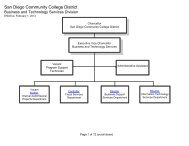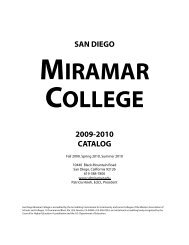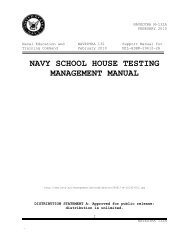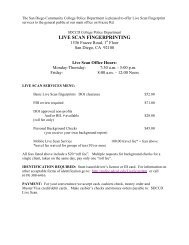NAVY SCHOOL MANAGEMENT MANUAL
NAVY SCHOOL MANAGEMENT MANUAL - AIM
NAVY SCHOOL MANAGEMENT MANUAL - AIM
- No tags were found...
You also want an ePaper? Increase the reach of your titles
YUMPU automatically turns print PDFs into web optimized ePapers that Google loves.
STEP TWO:<br />
<br />
When an adverse trend cannot be attributed to a reporting<br />
problem, a cause analysis will be conducted. Appendix B<br />
contains a list of elements that may be used to assist in<br />
the evaluation of curriculum, instruction, training, and<br />
student management.<br />
STEP THREE:<br />
<br />
<br />
Once a cause analysis has been conducted, action must be<br />
taken to correct the problem areas. There may be more than<br />
one reason for the adverse trends, so care must be taken to<br />
implement one change at a time and to monitor that change<br />
for significant results.<br />
When the recommended actions are beyond the control of the<br />
training activity, they will be forwarded to the respective<br />
Learning Center for resolution.<br />
5.3. Reporting for High Drop/Attrition/Setback Courses<br />
<br />
<br />
<br />
<br />
Pipeline drop from training/attrition is calculated by<br />
using the student flow methodology as described in Appendix<br />
H. In applying any student-flow formula vice a cohort<br />
formula it is generally recognized that a 12-month moving<br />
average is desirable. The 12-month moving average shows<br />
the latest annual course rate by adding data for the latest<br />
month and dropping data for the earliest month. This<br />
method eliminates seasonal distortions as well as<br />
preventing precipitous action based on fluctuations during<br />
a single month or two. NETC will provide necessary trend<br />
analyses expertise to support NETC in the conduct of the<br />
training analysis.<br />
Rates and trends for all courses will be monitored<br />
continuously. The analysis of performance will be based on<br />
the 12-month moving average. The 12-month moving average<br />
is necessary due to the extended length of most “A" school<br />
pipelines.<br />
NETC will monitor these rates. When the rates fall outside<br />
the NETC norm, the course will be flagged as an outlier.<br />
The first time a course is identified by NETC as an<br />
outlier, a cause analysis will be conducted by the activity<br />
using the element list in Appendix B.<br />
Results of the analysis will be forwarded to NETC complete<br />
with a set of milestones for corrective action.<br />
Information contained should include:<br />
5-18<br />
NAVEDTRA 135C
















